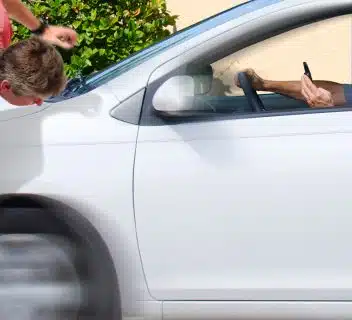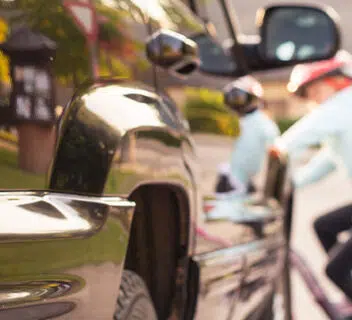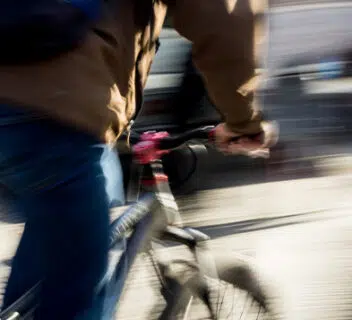Introduction: What is a Jaywalking Accident Lawyer and Why You Need One
A jaywalking accident lawyer specializes in representing pedestrians injured while crossing outside designated crosswalks or against traffic signals. Even if you were jaywalking when the accident occurred, you may still be entitled to significant compensation if the driver was negligent through distracted driving, speeding, or failing to obey traffic laws.
The key benefits of hiring an experienced pedestrian or jaywalking accident lawyer include expertise in comparative negligence laws, aggressive insurance company negotiation, and maximizing your compensation despite partial fault. In this guide, you’ll learn your legal rights, how fault is determined in pedestrian accidents involving jaywalking, the types of compensation available, and why 1-800-THE-LAW2 is your best choice for legal representation.
Immediate confirmation: You can pursue legal action and recover compensation even if you were partially at fault for the accident. Insurance companies often try to deny claims entirely when jaywalking is involved, but experienced pedestrian accident lawyers know how to overcome these tactics and secure fair settlements.
Understanding Jaywalking Accidents: Key Legal Concepts and Definitions
Core Legal Definitions
Jaywalking specifically refers to crossing streets outside designated crosswalks or ignoring traffic signals. However, this traffic violation doesn’t automatically make you responsible for the entire accident. Under comparative negligence laws used in most states, you can still obtain compensation even when you share fault for the pedestrian accident.
Driver duty of care represents the legal obligation for motor vehicle operators to watch for pedestrians regardless of crossing location. When drivers fail this duty through distracted driving, speeding, or other negligent behaviors, they can be held liable even when pedestrians violate traffic laws.
Related terminology includes pedestrian right-of-way violations, traffic control device infractions, and crosswalk violations – all of which factor into fault determination but don’t eliminate your right to seek compensation.
Legal Concept Relationships
Jaywalking violations connect directly to personal injury claims through comparative negligence principles. While your jaywalking may reduce your compensation percentage, the driver’s negligence – such as texting while driving or running traffic signals – often carries greater fault allocation.
The relationship between traffic violations and civil liability means that even if you received a jaywalking citation, this doesn’t prevent you from recovering damages for serious injuries, medical bills, and lost wages. Insurance companies frequently misrepresent this connection to unfairly deny claims from pedestrian accident victims.
Why Hiring a Jaywalking Accident Lawyer is Critical for Your Case
Insurance companies routinely blame jaywalking pedestrians to minimize payouts, often claiming 100% pedestrian fault to avoid paying any compensation. This tactic succeeds against unrepresented accident victims who don’t understand their legal rights under comparative negligence laws.
Statistics reveal that approximately 20 people die daily in the U.S. from pedestrian accidents, with many occurring outside crosswalks. However, driver negligence contributes to the majority of these accidents, even when pedestrians aren’t following traffic laws perfectly.
Complex state laws vary significantly on comparative negligence and pedestrian rights. Some states follow contributory negligence rules that can bar recovery entirely if you’re even slightly at fault, while others use comparative negligence that reduces compensation proportionally. Professional legal representation increases average settlement amounts by up to 300% compared to handling insurance claims independently.
Legal expertise becomes essential to prove driver negligence despite pedestrian violations. Experienced pedestrian accident attorneys know how to gather evidence of distracted driving, speeding, impaired driving, or other factors that establish primary fault with the motor vehicle operator.
Comparative Fault and Compensation Table
| Pedestrian Fault % | Driver Fault % | Compensation Recovery |
|---|---|---|
| 10% | 90% | 90% of total damages |
| 25% | 75% | 75% of total damages |
| 40% | 60% | 60% of total damages |
| 50% | 50% | 50% of total damages |
| 70% | 30% | 30% of total damages* |
*Note: In pure contributory negligence states (Alabama, Maryland, North Carolina, Virginia, Washington D.C.), any pedestrian fault may bar recovery entirely.
State-by-State Impact: Most states follow comparative negligence, allowing recovery even with significant pedestrian fault. However, some states cap recovery when pedestrian fault exceeds 50%, making experienced legal representation crucial for fault determination and evidence gathering.
Step-by-Step Guide to Building Your Jaywalking Accident Case
Step 1: Immediate Actions After the Accident
Seek emergency medical care regardless of apparent injury severity. Many serious injuries like traumatic brain injuries or internal damage aren’t immediately obvious but can have devastating long-term effects. Prompt medical treatment also creates necessary evidence linking your injuries to the accident.
Call 911 to ensure police reports document the accident scene, including driver behavior, traffic conditions, and witness statements. The police report becomes crucial evidence, though it’s not the final word on fault determination in your pedestrian accident case.
Gather evidence immediately: take photos of vehicle damage, your injuries, traffic signals, and the accident scene. Collect witness contact information and the driver’s insurance details. Document everything while your memory is fresh and before evidence disappears.
Critical warning: Avoid admitting fault or discussing accident details with insurance companies. They’ll use any statement against you to deny your claim or minimize compensation.
Step 2: Building Your Legal Case
Document all medical treatment and expenses resulting from the accident. This includes emergency treatment, ongoing rehabilitation costs, and future medical needs related to your injuries. Medical bills form the foundation of your economic damages claim.
Your legal team will collect evidence of driver negligence beyond your jaywalking violation. This includes cell phone records proving distracted driving, traffic camera footage showing speeding, witness statements about erratic driving behavior, and accident reconstruction expert analysis.
Preserve video footage from traffic cameras, nearby businesses, or dashboard cameras before it’s deleted. This evidence often proves driver negligence that insurance companies try to hide when blaming pedestrian accident victims for jaywalking.
Calculate comprehensive economic damages including current medical expenses, lost wages from missed work, future earning capacity if injuries affect your ability to work, and rehabilitation costs for long-term recovery.
Step 3: Negotiating and Maximizing Compensation
File insurance claims with both the driver’s carrier and your own insurance if applicable. Counter initial low-ball settlement offers with comprehensive damage documentation including future medical needs and long-term injury impacts.
Present evidence of driver negligence to shift fault allocation in your favor. Even in jaywalking cases, proving the driver was texting, speeding, or otherwise negligent can result in majority fault assignment to the motor vehicle operator.
Negotiate with multiple insurance carriers when applicable, including the driver’s liability coverage, your own uninsured/underinsured coverage, and any applicable umbrella policies. Experienced accident lawyers know how to maximize recovery from all available sources.
Prepare for litigation if insurance companies refuse fair settlement negotiations. Many jaywalking cases require court proceedings to achieve maximum compensation, particularly when insurance companies maintain unreasonable fault assessments.
Common Mistakes That Hurt Jaywalking Accident Claims
Mistake 1: Accepting quick insurance settlements without understanding the full extent of your injuries. Serious injuries like traumatic brain injuries or spinal damage may not manifest immediately, and early settlements prevent recovery for long-term medical needs.
Mistake 2: Admitting fault or discussing accident details with insurance adjusters. These conversations are recorded and used to deny claims or minimize compensation, even when driver negligence was the primary cause.
Mistake 3: Delaying medical treatment or failing to follow prescribed treatment plans. Insurance companies argue that gaps in treatment mean injuries weren’t serious or weren’t caused by the accident.
Mistake 4: Attempting to handle complex legal proceedings without experienced representation. Insurance companies employ teams of lawyers and adjusters trained to minimize payouts to unrepresented accident victims.
Pro Tip: Contact 1-800-THE-LAW2 immediately for a free consultation and case protection. Our legal team begins gathering evidence and protecting your rights from day one, preventing insurance company tactics that could destroy your case.
Real-Life Case Study: $850,000 Settlement for Jaywalking Victim
Case Background: A 45-year-old pedestrian was struck by a car while crossing mid-block in a busy downtown area. The impact caused severe injuries including broken bones, traumatic brain injuries, and permanent disability requiring extensive medical treatment and rehabilitation.
Initial Situation: The insurance company immediately denied the claim, citing jaywalking violation and claiming 100% pedestrian fault. They argued that crossing outside the designated crosswalk made the pedestrian entirely responsible for the accident, offering zero compensation for medical bills and lost wages.
Legal Strategy: Our experienced pedestrian accident lawyers investigated beyond the jaywalking allegation and proved the driver was texting while driving and speeding 15 mph over the limit. We demonstrated that driver negligence was the primary cause despite the pedestrian’s traffic violation.
Evidence Gathered:
- Cell phone records showing active texting at the time of impact
- Traffic camera footage proving excessive speed
- Witness statements confirming distracted driving behavior
- Accident reconstruction expert testimony establishing fault allocation
- Comprehensive medical documentation of serious injuries and future care needs
Final Results: $850,000 settlement with only 30% comparative fault assigned to the pedestrian for jaywalking. The remaining 70% fault was attributed to driver negligence, allowing recovery of $595,000 in compensation for medical expenses, lost wages, and pain and suffering.
Timeline: 18-month case resolution from initial consultation to final settlement, including extensive investigation, expert testimony preparation, and aggressive negotiation with the insurance company.
Frequently Asked Questions About Jaywalking Accident Claims
A1: Yes, most states allow compensation based on comparative negligence even if you were partially at fault for jaywalking. The key is proving driver negligence contributed to the accident through distracted driving, speeding, or other violations.
A2: Case value depends on injury severity, medical expenses, lost wages, future care needs, and the percentage of driver fault versus pedestrian fault. Even with partial fault, serious injuries can result in substantial compensation.
A3: Insurance companies often try to deny or minimize jaywalking claims by claiming 100% pedestrian fault, but experienced accident attorneys can overcome these tactics by proving driver negligence and proper fault allocation.
A4: Statute of limitations varies by state, typically 2-3 years from the accident date, making immediate legal consultation essential to preserve evidence and protect your rights.
A5: Driver violations like speeding, running traffic signals, or distracted driving often result in majority fault assignment to the motor vehicle operator, significantly increasing your compensation despite jaywalking.
Conclusion: Why 1-800-THE-LAW2 is Your Best Choice for Jaywalking Accident Representation
Proven Track Record: Our legal team has recovered over $500 million for pedestrian accident victims, including numerous jaywalking cases where insurance companies initially denied all compensation. We know how to prove driver negligence and maximize recovery even when our clients share fault.
No Upfront Costs: We work on a contingency fee basis, meaning no payment unless we win your case and recover compensation. This allows injured pedestrians to obtain experienced legal representation regardless of their financial situation after suffering injuries.
24/7 Availability: Free consultation available anytime to discuss your jaywalking accident case. We understand that accidents happen at all hours, and immediate legal guidance can prevent critical mistakes that damage your claim.
Specialized Expertise: Our dedicated team focuses exclusively on pedestrian and motor vehicle accidents, including complex jaywalking cases. We understand comparative negligence laws, insurance company tactics, and how to gather evidence proving driver negligence.
Immediate Action Required: Insurance companies begin building their defense against your claim immediately after the accident. The sooner you contact 1-800-THE-LAW2, the better we can protect your legal rights and gather necessary evidence before it disappears.
Don’t let insurance companies convince you that jaywalking eliminates your right to fair compensation. Call 1-800-THE-LAW2 today for immediate case evaluation and protection of your legal rights. Your phone verification is required for our free consultation, so have your valid phone number ready when you call.
Remember: even if you were jaywalking, driver negligence may make them primarily responsible for your injuries. Contact our experienced pedestrian accident lawyers now to learn your legal options and begin building your case for maximum compensation.
















